CPU Z80 (@ 4 MHz) Genre Platform game | Cabinet Standard, cocktail Initial release date 1982 | |
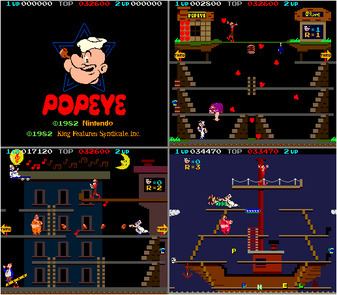 | ||
Mode(s) Single player, 2 players alternating Display Raster, 512 x 448 pixels (Horizontal), 288 colors Sound General Instrument AY-3-8910 (@ 2 MHz) Similar Atari games, Platform games | ||
Popeye (ポパイ, Popai) is a 1983 arcade platform game developed and released by Nintendo based on the Popeye characters licensed from King Features Syndicate strips and animated shorts. Unlike most platform games, the player cannot jump; the only button is "punch." The game was licensed by Atari for exclusive release in the United Kingdom and Ireland, and featured in an Atari designed and manufactured cabinet. Some sources claim that Ikegami Tsushinki also did design work on Popeye.
Contents
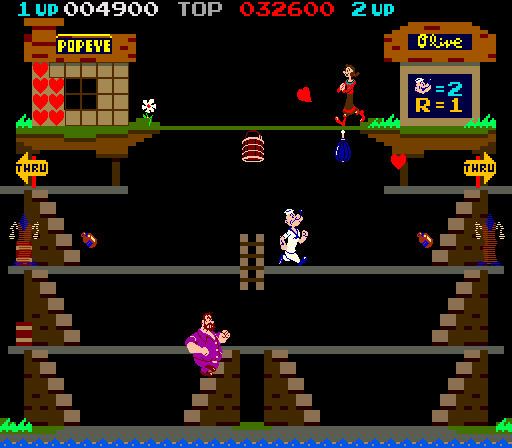
The Popeye characters were originally going to be used in the game that later became Donkey Kong. However at that time on the development of the game, Nintendo could not get the licenses to use the characters.

Ben Falls holds the world record score of 3,023,060 earned on December 20, 2011, according to Twin Galaxies International Scoreboard.
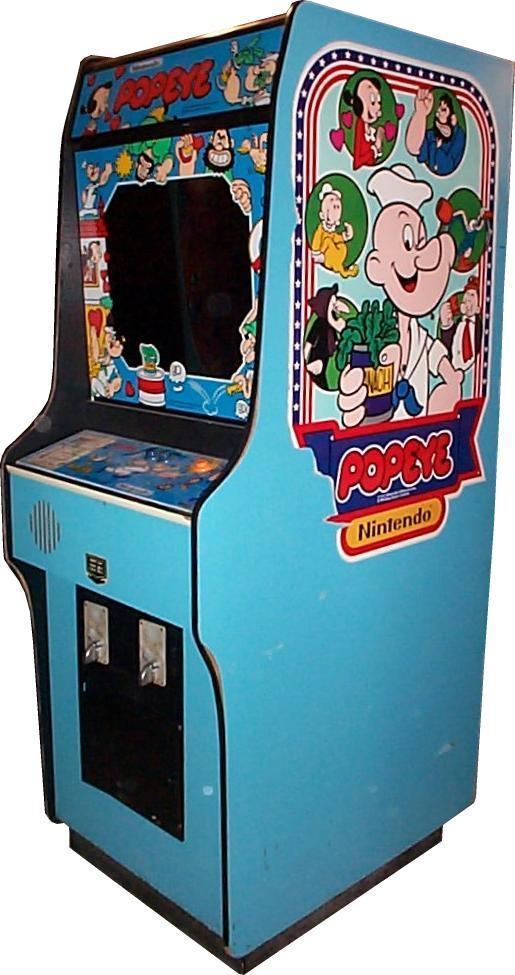
The Family Computer (Famicom) saw an educational sequel on November 22, 1983: Popeye no Eigo Asobi, an English teaching game akin to the later Donkey Kong Jr. Math.
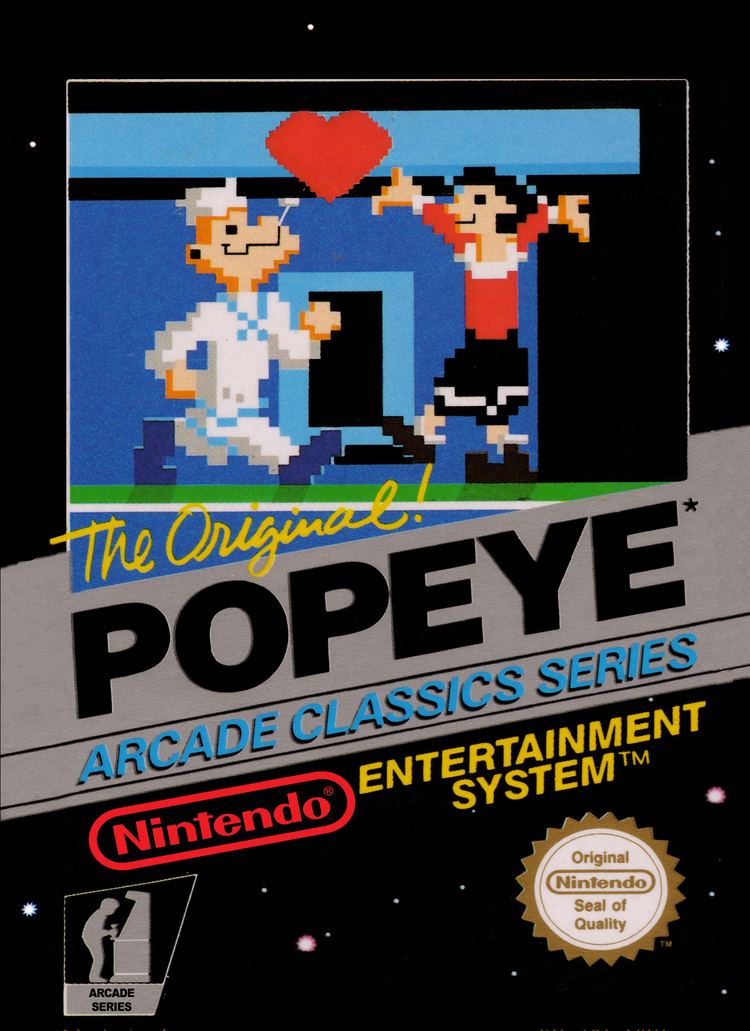
Gameplay
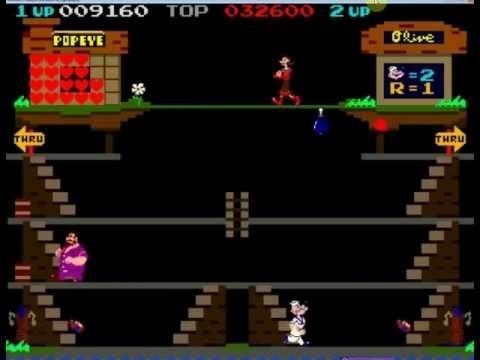
The object of the game is for Popeye to collect a certain number of items dropped by Olive Oyl, depending on the level — 24 hearts, 16 musical notes, or 24 letters in the word HELP — while avoiding the Sea Hag, Brutus and other dangers. The player can make Popeye walk back and forth and up and down stairs and ladders with a 4-way joystick. There is a punch button, but unlike similar games of the period, no jump button. Conversely, Brutus can jump down a level and also jump up to hit Popeye if he is directly above.

Despite the feature of a punch button, Popeye cannot attack Brutus directly. Instead, the button is used for the following:
Other licensed Popeye characters in the game are Olive Oyl, Swee'Pea, and Wimpy, though they are mostly decorative and do not add heavily to the gameplay. Wimpy appears in Round 2 (the street scene) on one end of the seesaw in the lower left corner of the field, to act as a counterweight. Swee'Pea floats high above, with bonus points to be earned if Popeye can spring off the see-saw and touch him.
Popeye loses a life if he is hit by Brutus or any thrown/flying object, or if he fails to catch a dropped item before it reaches the bottom of the screen.
Ports
The game was ported to the TRS-80 Color Computer 2, Commodore 64, Texas Instruments TI-99/4A, Atari 8-bit, Intellivision, Atari 2600, Atari 5200, and ColecoVision, and one of the few games ported to the Odyssey². A board game based on the video game was released by Parker Brothers in 1983. A tabletop video game was one of the first notable such devices to have a color LCD.
On July 15, 1983, Popeye was one of the first three games released for the Family Computer, along with Donkey Kong and Donkey Kong Jr. Most ports were handled by Parker Brothers, except for the NES version, which was ported by Nintendo itself. In 2008, Namco Networks released an enhanced remake for mobile phones. The game plays largely the same, and features an enhanced mode in addition to the arcade original, which includes a bonus stage and an extra level paying homage to the short A Dream Walking where Popeye must save a sleepwalking Olive, as well as some trivia segments. In the game it is possible to earn tokens, which can be used to buy some of the old comic strips.
A homebrew clone for the Commodore VIC-20 was released in 2015.
Reception
Electronic Games wrote in 1983 that the arcade version of Popeye at first appeared to be "yet another variation of a theme that's become all too familiar since Donkey Kong". "But there are some nuances", it added, "not the least of which are the graphics and sound effects, that tend to allow the game the benefit of the doubt in execution". The magazine concluded that "Popeye does offer some interesting play that is more than complimented by the cosmetics." Arcade Express scored it 7 out of 10 in January 1983, stating that the graphics are "the closest thing to a videogame cartoon seen yet in an arcade" but the gameplay doesn't match the "visual standards."
